 0
0 As a Phoenix desert resident, my “spring cleaning” generally takes place somewhere between summer’s 115 degree temperatures and winter’s rainy monsoon season. However, when I lived in the great Midwest, that distinct turn from winter weather to sunny spring always inspired me to open the windows, air the place out and get to cleaning.
I imagine those of you in New York are gearing up for that much desired weather about-face. As you prepare to usher in chirping robins and skinny squirrels who’ve reluctantly crawled out of their cozy hibernations, start thinking about your own spring cleaning. And, more specifically, organizing your wardrobe.
Below I’ve briefly outlined what to do with garments you no longer want to keep. Let the list inspire you to get rid of things, if not for more closet space than for a little extra dough in your back pocket.

1. Store it
Let’s face it. Going through your closet isn’t a black and white process. You have a “keep pile,” a “toss pile” and a “Eh… I’m not really sure what I want to do with this yet” pile. The lattermost is the trickiest. After all, the last thing you want to do is regret your decision to toss something out. Anything with sentimental value, for example, should be kept. Designate a box for “maybes,” label it as such and then thoughtfully re-visit the clothes again on another day.

2. Sell It
As someone who frequently moves, my favorite part of spring cleaning is getting rid of things (fewer things to pack up later). What makes it even more fun, though, is cashing it all in. I’ve become quite good at this and, honestly, could write a whole book on the process. I’ll give you a few highlights and tips below, though.
– Sell it online via online via eBay or Craigslist. Craigslist is fee free, but it will require more of your time and the ability to coordinate your schedule with buyers’ schedules. High end items in good condition do best. I prefer eBay because it’s less work.
– If it’s vintage (especially high end), consider selling it on Etsy. Especially if you have a lot of it. You’ll have to pay seller fees, but the Etsy platform attracts thousands of buyers willing to spend money on high quality. Always take attractive pictures and detail blemishes, dimensions and any pertinent information.
– Head to a local consignment shop. This requires the least amount of your time and you won’t get the whole profit, but at least you still make money on your goods. Always call ahead to see what the shop needs most and bring your garments clean and on hangers.
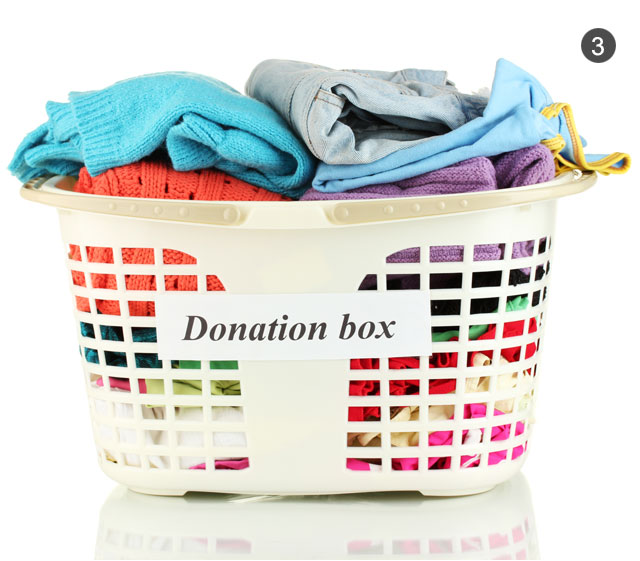
3. Give It Away
There will always be a few garments that others don’t want. For example, clothing that shows its age or has tears, stains or pilling are not going to sell. Consignment shops will simply reject them and online buyers won’t bite. For these, let’s call them “unwantables,” your best bet is to simply donate.
You have several options. First, you can offer them for free on websites such as Craigslist and Freecycle. This is nice because anyone who claims them will come to you.
Alternatively, you can donate them to local homeless shelters or thrift stores. Donating to a registered charity allows you to claim tax deductions. Always ask the organization for a proper form.
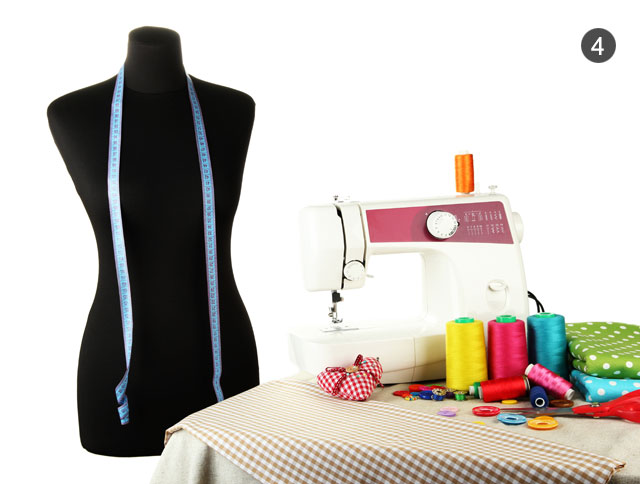
4. DIY it
If you’re crafty (or want to be crafty), thoughtfully examine any “unwantables” and re-invent them. For example, old frocks with pretty patterns can easily be turned into throw pillows or re-cover an old chair. Check YouTube or Pinterest for thousands of ideas.
You can also upcycle an old garment by adding to it or changing it in some way. Again, lots of ideas are available online. The below blogs are some of my favorite DIY Fashion blogs — let them inspire your own creations!
By Wendy Rose Gould
Posted by Wendy Rose Gould at 09:00 AM
Opinions , Points of View , Shopping News , Shopping Trends , The City , Tips Guides |
 0
0 
Hitting the clearance rack is one easy way to save money, but you can save even more by planning ahead and shopping strategically throughout the year. Obviously, items are discounted when they go out of season. For example, winter apparel goes on sale just before spring to make room for new merchandise.
Knowing when other items go on sale may not be as easy to figure out, though.To help shoppers save, Lifehacker put together a chart they dubbed, “The Best Time to Buy Anything in 2013.” For every month of the year, they’ve included a short list of items that are discounted.
January
According to Lifehacker, January is the best time of year to get discounts on clothing, broadway tickets, furniture and linens/bedding, among other items. Broadway tickets go on sale because winter and fall are the slowest months for ticket sales, furniture is discounted because furniture companies release new products in February and linens/bedding go on sale thanks to traditional “white sales.”
February
For February, you’ll still be able to find discounted Broadway tickets since it’s the slow season. In addition, cellphones, televisions and home theaters systems are cheaper than they are the rest of the year. Lifehacker says that cellphones are promoted as Valentine’s Day gifts and, as a result, are part of “buy one get one” sales. Televisions and home theater systems are more likely to go on sale during February as part of pre-Superbowl sales.
March
The month of March is a great time to buy chocolate (post Valentine’s day sales), golf clubs (new models are introduced just before summer, so old models are put on sale) and luggage (March is between travel seasons so demand goes down). Additionally, frozen foods go on sale thanks to “National Frozen Food Month,” so look for coupons and special deals at your local grocery store.
If it’s something you absolutely need right away, then by all means, buy now. For example, perhaps you need new luggage for an international trip you’re taking next week and can’t wait for suitcases to go on sale in March. However, planning your purchases in advance will help you save money in the long run.
By Wendy Rose Gould
Posted by Wendy Rose Gould at 12:00 AM
Opinions , Points of View , Saving Tips , SHOPPING , Tips Guides , Trends |
 0
0 
There are many facets to Selfridges “No Noise” initiative, some which go beyond the literal interpretation of silence. First, they’ve reintroduced the Silence Room that existed when the store opened in 1909. The Silence Room serves as a refuge for busy shoppers to find peace of mind and re-fuel before heading back out into the frenzy.
In addition to their silence room, Selfridge has planted “Headspace Pods” throughout the store that take listeners through a guided, 10 minute meditation. They’ve also invited the John Cage Orchestra into the store for a live performance and will host a Sunday series of talks by the Idler Academy through February.
If Silent Rooms, medidation, live classical music and weekly discussions weren’t enough, Selfridge’s restaurants will have special menus that utilize raw and organic ingredients and help diners “enjoy the pleasures of simple food”. Diners will also have access to nutrition clinics and can sample organic and bio-dynamic wines.
Cooler yet, though, is Selfridges “Quiet Shop,” which takes the concept of “No Noise” to a revolutionary new way of shopping. Their “Quiet Shop” showcases a thoughtful selection of minimalist apparel from the spring and summer 2013 runways. And, with permission from some of the world’s most recognizable labels (including Creme de la Mer, Levi’s and Beats by Dre), they’ve de-branded merchandise. That means no logos to persuade buyers — truly an innovative step toward reducing “noise.”
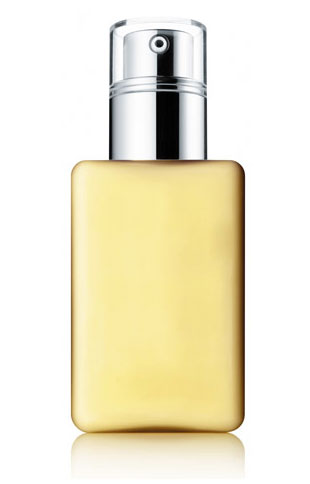
CLINIQUE
No Noise Dramatically Different Moisturizing Lotion
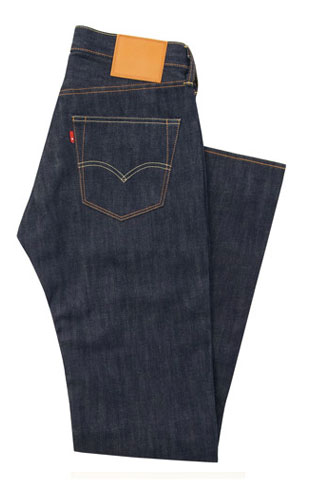
LEVI’S
No Noise 501 straight-leg jeans
Could NYC Handle “No Noise”?
The hustle and bustle of a big city such as NYC is one that’s hard to escape. Even at 2 a.m. on Tuesday night there are boisterous crowds filling up the streets with sound. Not to mention the visual noise city dwellers have so quickly become accustomed to.
We pondered the question, “Could NYC handle no noise?” Some may argue that big city dwellers have become so accustomed to noise (in its many forms), that shopping in silence would not relax them at all. In fact, it may achieve the contrary.
Further, what kind of effect would de-branding have on NYC shoppers? Just how big of a role does an obvious logo play in our shopping habits? For some — and the red carpet question of “Who are you wearing?” demonstrates this — it’s all about wearing and supporting the hottest designers.
The most important question to ask yourself, though, is this: Would shoppers as a whole be able to recognize greatness without the help of a label?
The story of renowned violinist Joshua Bell playing incognito at D.C. metro station comes to mind. With his $3.5 million instrument, Bell — one of the world’s most talented musicians — played six incredibly intricate Bach pieces for 45 minutes. And who stopped to listen? A mere 6 individuals, and for not much more than a few minutes each. Roughly 20 people tipped him a total of $32 as they walked by. And when he finished playing and the sounds of the city took over his space, nobody noticed and nobody clapped.
Maybe passers-by simply didn’t have the time to stop and listen. But if they had known that only two days ago this very performer sold out in a Boston theater where seats averaged $100 a pop, perhaps they would have made the time.
Which leads us to this question: what is your take on Selfridge’s “No Noise” initiative? Do you think it’d be an effective experiment within New York City? Share your opinion in the comments or on our Facebook page.
By Wendy Rose Gould
Posted by Wendy Rose Gould at 01:40 PM
Opinions , Places , SHOPPING , Stores , The City , Trends |
 0
0 Perhaps this dates me, but as a child I remember watching the 1994 re-make of The Little Rascals (you know — the kids movie with Alfafa, Spanky, Buckwheat and Darla). In this movie, there was a great divide between the neighborhood boys and girls. So much so, in fact, that the school-aged boys belonged to an exclusive society dubbed the “He-Man Woman Haters Club.”
That club is the first thing I thought of when I heard about the various single-sex restaurants, clubs and societies popping up across the world. Only instead of guys nailing a “boys only” sign on doors, it’s the women who are saying ex-nay on the xy chromosome combo and creating their own female-exclusive venues.
Take the “Ladies of the Rise” organization, located in London, which hosts women-only soirees throughout the city. It’s one of several blossoming social groups that plans and hosts single-sex community events. Others are taking their cue from these new groups, as well. For example, central London’s Kate Percival launched a ladies-only members club called “Grace Belgravia” and KC Gates, a Canadian rugby player, has plans to turn her Soho bar Sofakingcool into a restaurant where only chicks are allowed to dine.
Women-Only Clubs/Organizations in New York City
NYC’s Colony Club (Park Avenue and 62nd Street) was ahead of the curve on this one. This private social club was founded in 1903 in response to the various gentlemen-only clubs popping up in the city. It was modeled after said mens clubs and to this day only admits men as guests.

The Cosmopolitan Club (122 East 66th Street between Park and Lexington Avenues) is another ladies-only social club that hosts classes, lectures and special events for members or member-guests. Since its establishment in 1909, it’s served as an oasis for accomplished NYC women to rub elbows, exchange ideas and embark on new friendships.
Also in New York City is The Junior League (130 East 80th Street), an “organization of women committed to promoting volunteerism, developing the potential of women, and improving communities through the effective action and leadership of trained volunteers.” This by-women/for-women charitable organization was founded in 1901 and its 2,500 volunteers donate over 250,000 hours of their time annually.
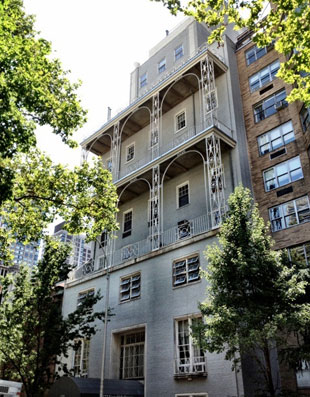
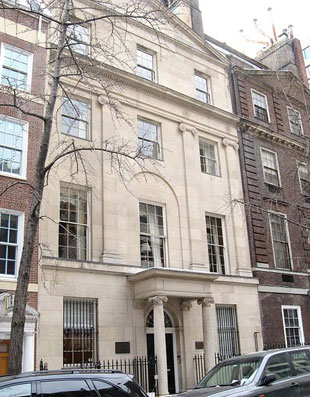
While the Big Apple does provide some organizations and clubs for women, the sort of modern-day, single-sex restaurant/venue trend that’s sweeping through the UK hasn’t really come to fruition in the United States. If it does, though, how would you respond? Would you be the first to attend one of these events? Or would you observe from a distance? Or maybe you’d cry out in revolt against the division of the sexes?
We’d love to hear your opinion on the matter, so share it in the comment section below or share your thoughts on our Facebook page.
By Wendy Rose Gould
Posted by Wendy Rose Gould at 12:00 AM
bargain news , Fashion: Trends, Style, and Business , Insights , Opinions , Points of View , Retail , Tips Guides , Trends |
